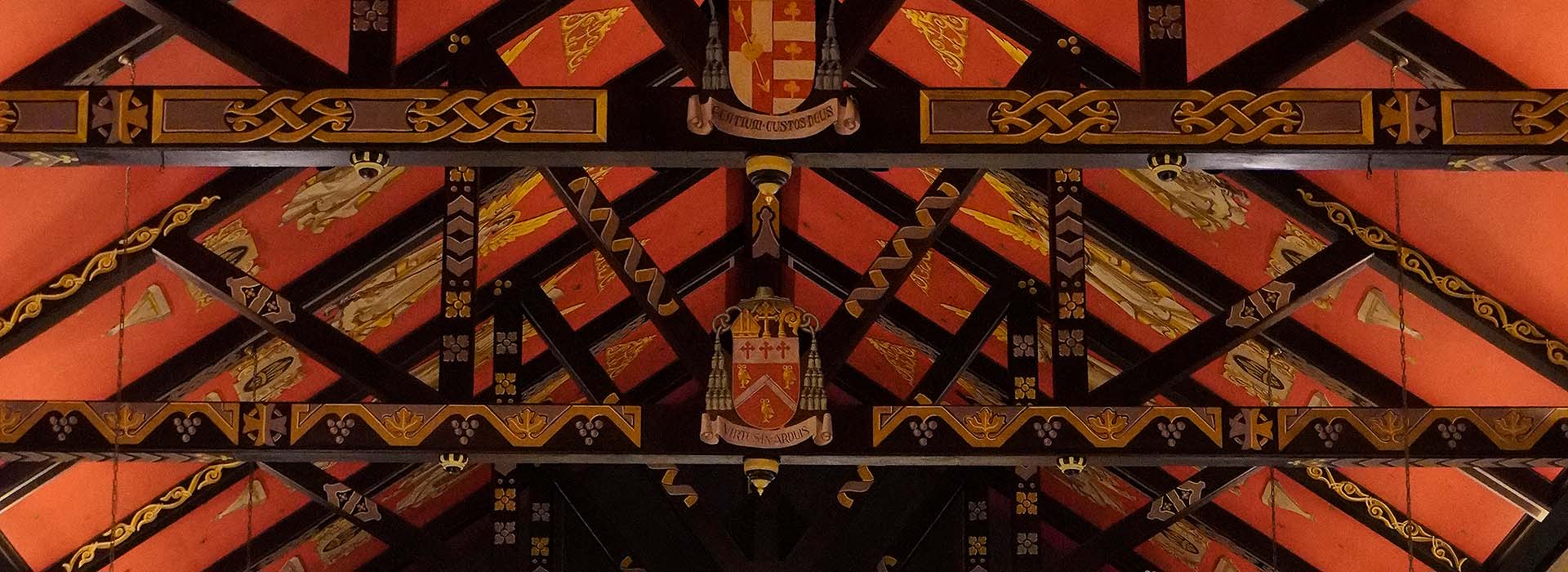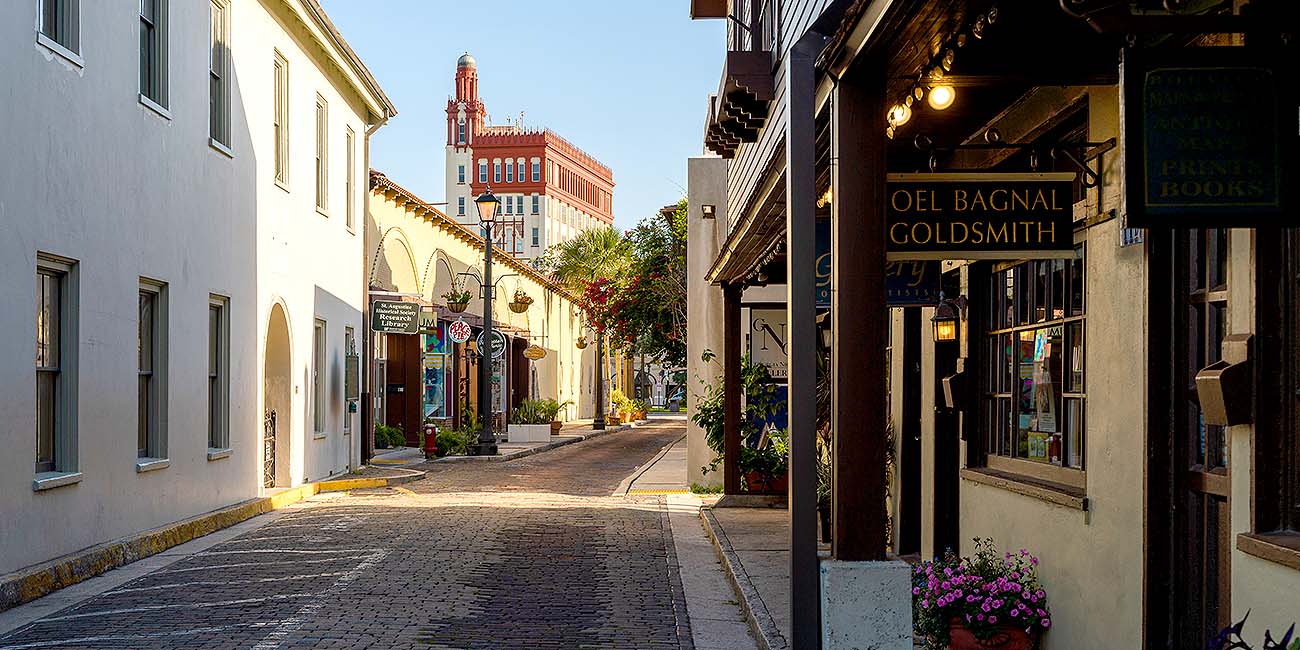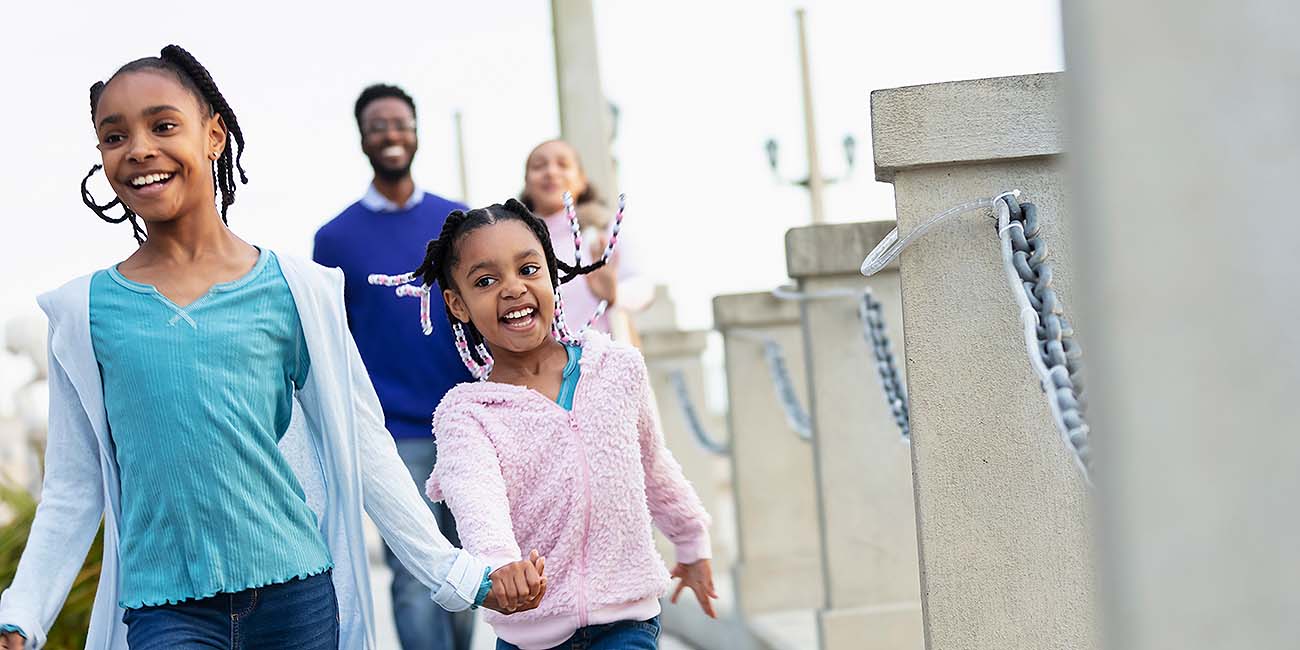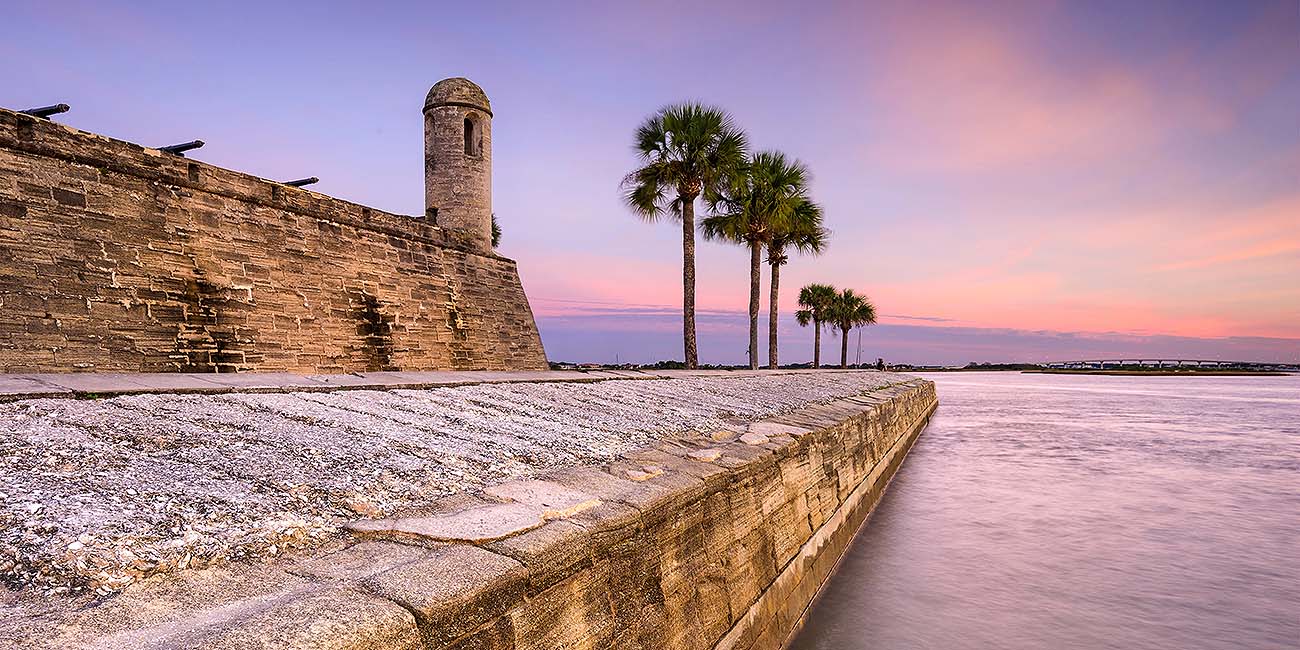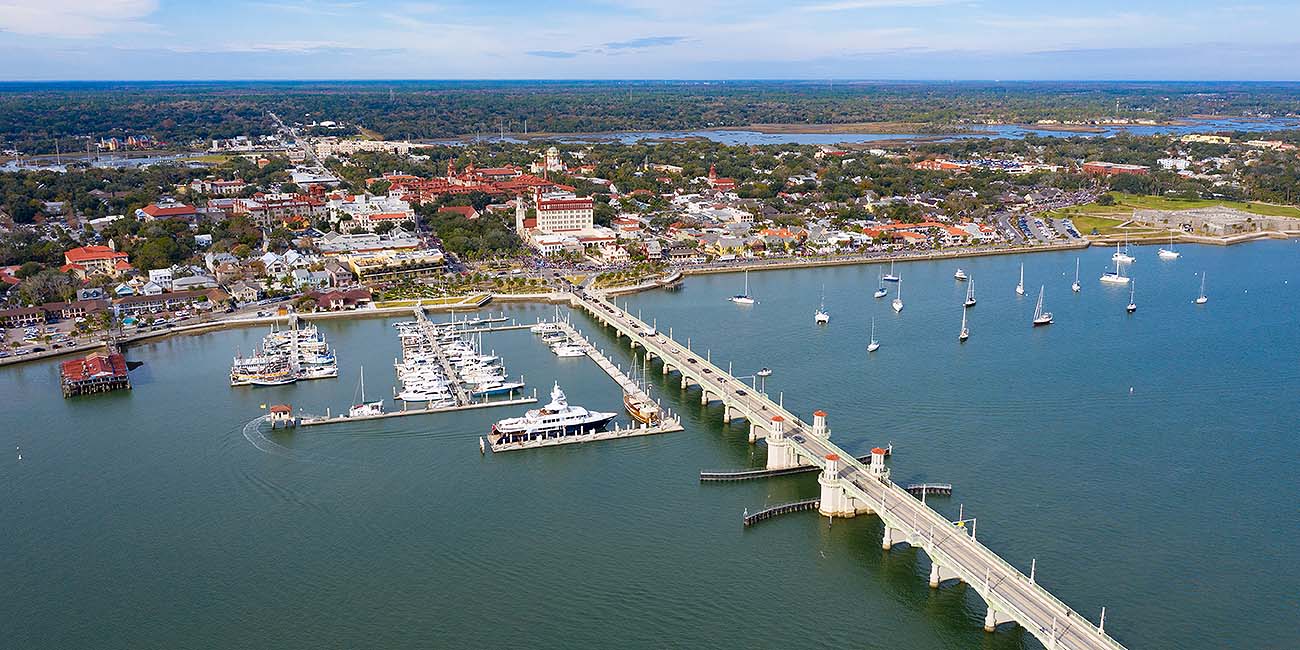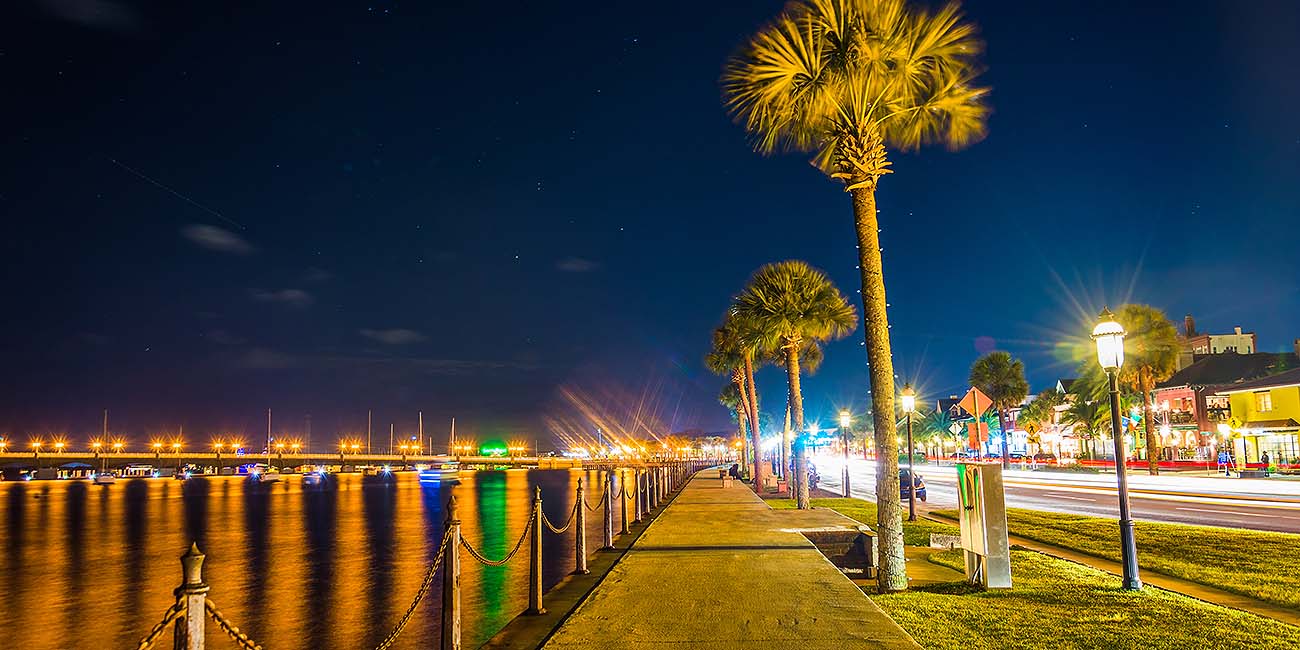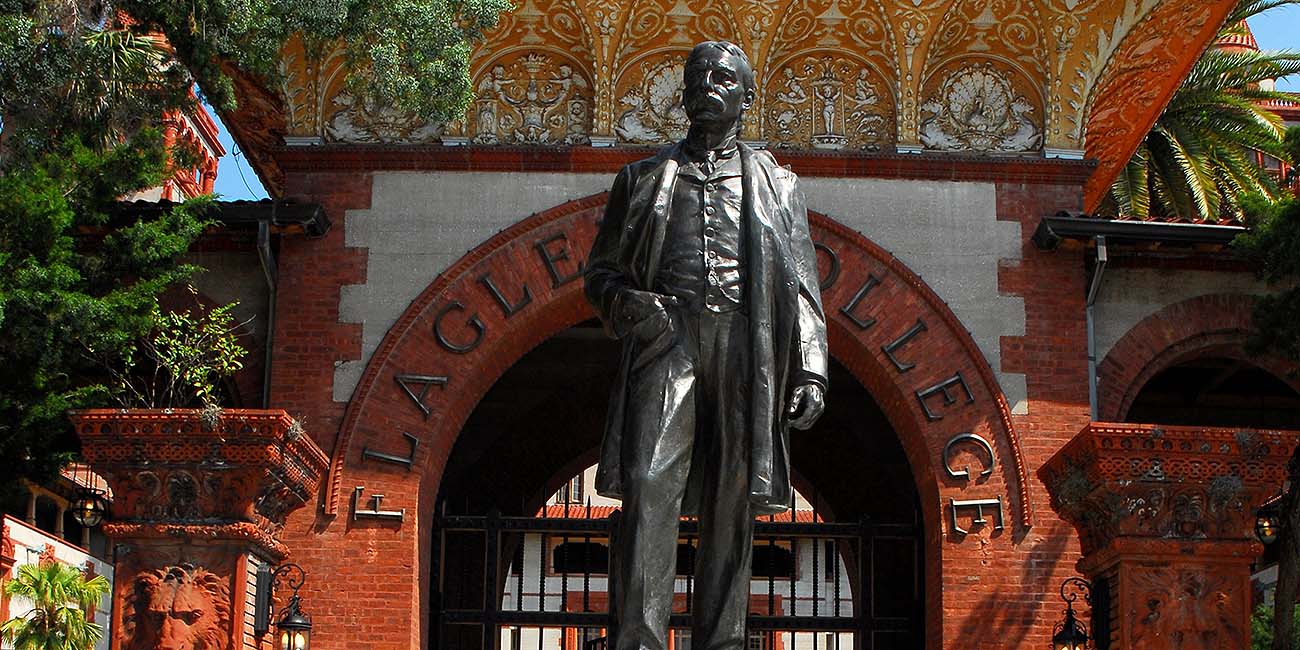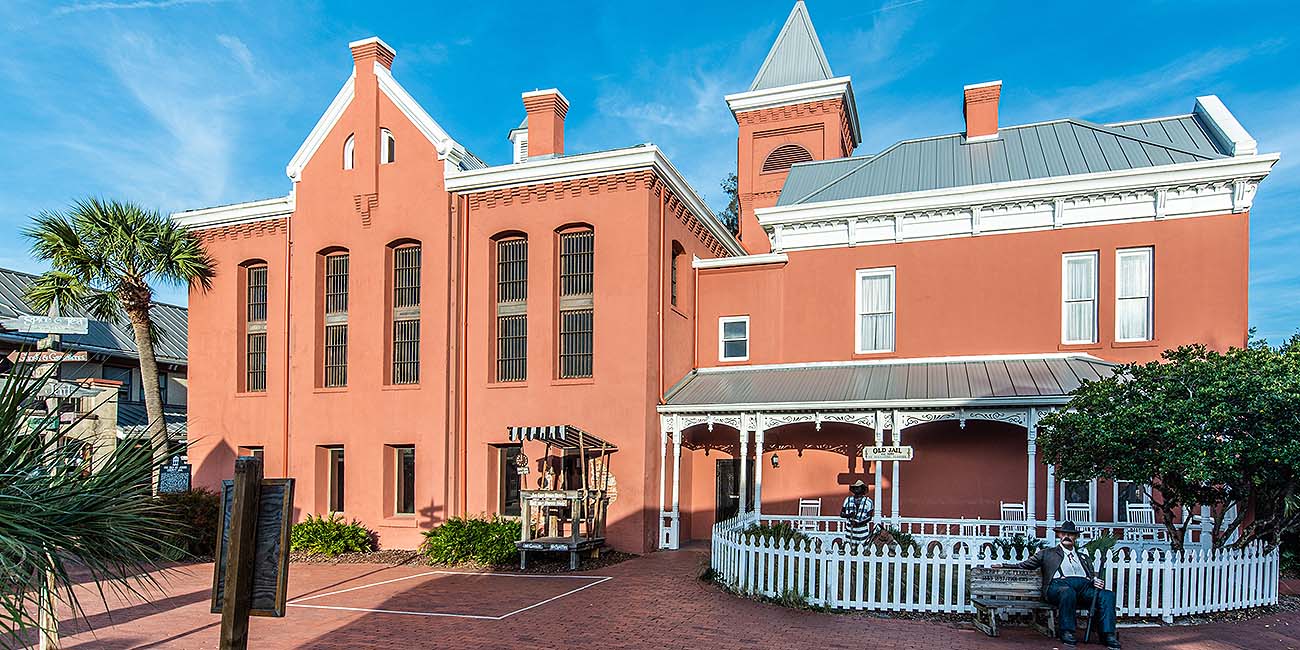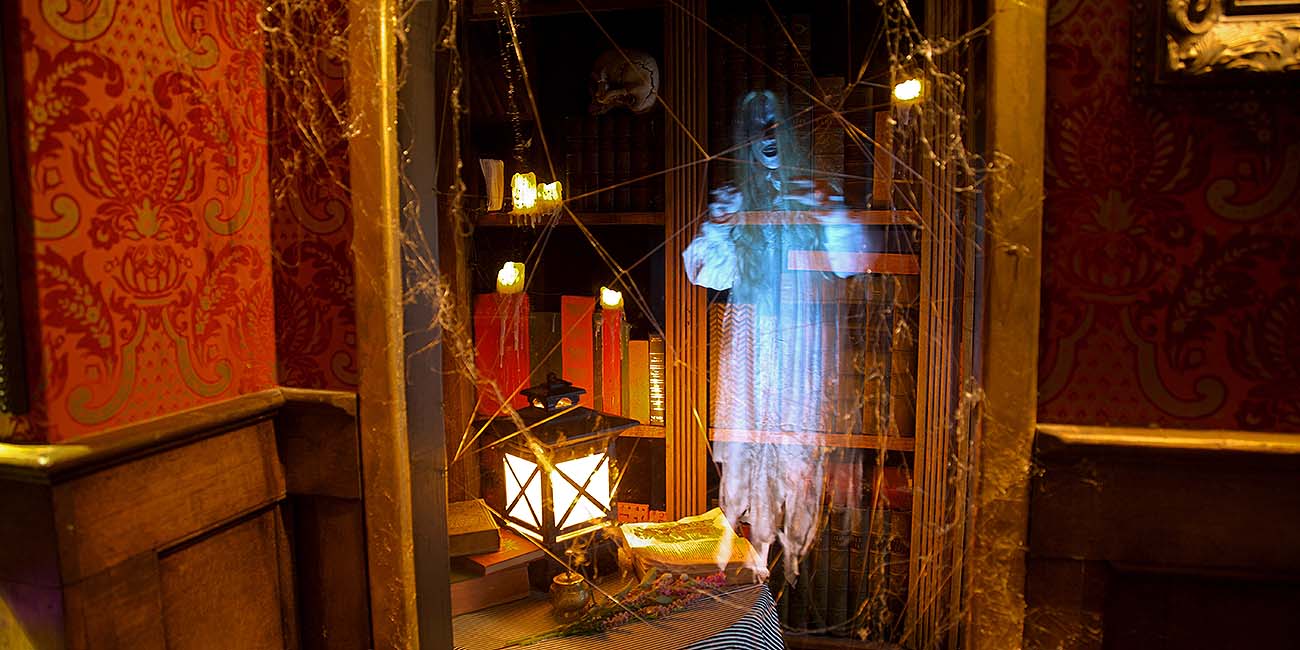St. Augustine’s religious history stands apart because it began long before most other cities in the United States were even founded. It is home to the very first Catholic parish in the country, which means the roots of organized Christian worship in the United States started right here. What makes it even more unique is how those early Catholic beginnings evolved over time into a richly layered religious landscape. The churches of St. Augustine set the foundation, but as different cultures and communities arrived, new faiths found their place. Today, the churches in St. Augustine include everything from historic Protestant congregations and African-American churches to Jewish synagogues and a Greek Orthodox shrine. The city’s small size makes this spiritual diversity even more remarkable. All of these places are within walking distance of each other, offering visitors a rare opportunity to explore centuries of faith in just a few blocks.
Religious Heritage of St. Augustine

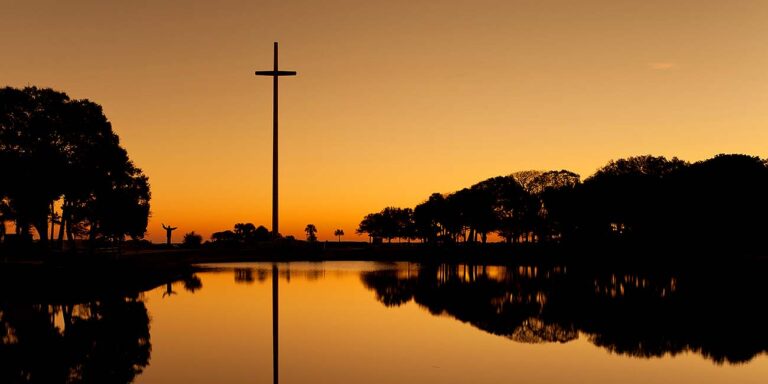
How Has Religion Shaped the Identity of St. Augustine?

St. Augustine’s story has always been tied to faith. As the oldest European-established city in the continental United States, it has been a place where belief and community grew side by side. The city’s religious roots started with Catholicism, but over time, new voices, denominations and traditions arrived. Today, that mix of faiths gives the city one of the richest religious histories in the country.
If you walk through the historic district, you’ll pass churches that have stood for centuries and others that reflect newer communities. From the early days of Spanish missionaries to the Civil Rights Movement and beyond, the church of St. Augustine has always been part of the city’s most important moments. These spaces remain active parts of the community, drawing visitors from around the world while continuing to serve the locals who know them best.
How Did Catholicism Begin in St. Augustine?

The Catholic roots of St. Augustine go back to 1565, when Spanish Admiral Pedro Menéndez de Avilés came to Florida. With him was Father Francisco López de Mendoza Grajales, who celebrated Mass shortly after they landed. That service, held outdoors on the shoreline, was the first Catholic Mass in what would become the United States. It also marked the start of the church in St. Augustine, which is now recognized as the nation’s oldest Catholic parish.
Not far from where that first Mass was held, Mission Nombre de Dios was established in 1587. Spanish missionaries used the site to teach and convert local Indigenous communities.
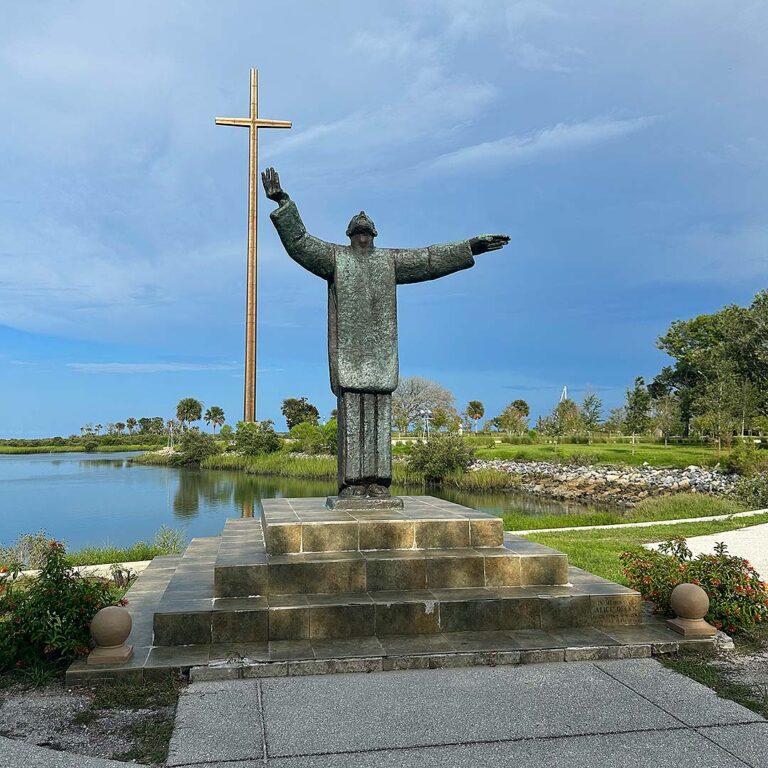
It became a center for worship and one of the earliest religious landmarks in America. The Great Cross that stands at the mission today honors that early history and towers above the trees as a symbol of faith and welcome.
The Cathedral Basilica of St. Augustine, built in 1797, stands on the site where the parish began. Though it was damaged by fire in 1887, it was rebuilt with great care and remains an active place of worship. With its coquina walls, stained glass and peaceful interior, it is one of the most well-known churches in St. Augustine and a place where past and present meet. Many visitors walk in to admire the beauty and end up staying for a quiet moment of reflection.
Another reminder of early Catholic life is the St. Francis Barracks. Built between 1724 and 1755 by Franciscan friars, the building was used to teach and house clergy.
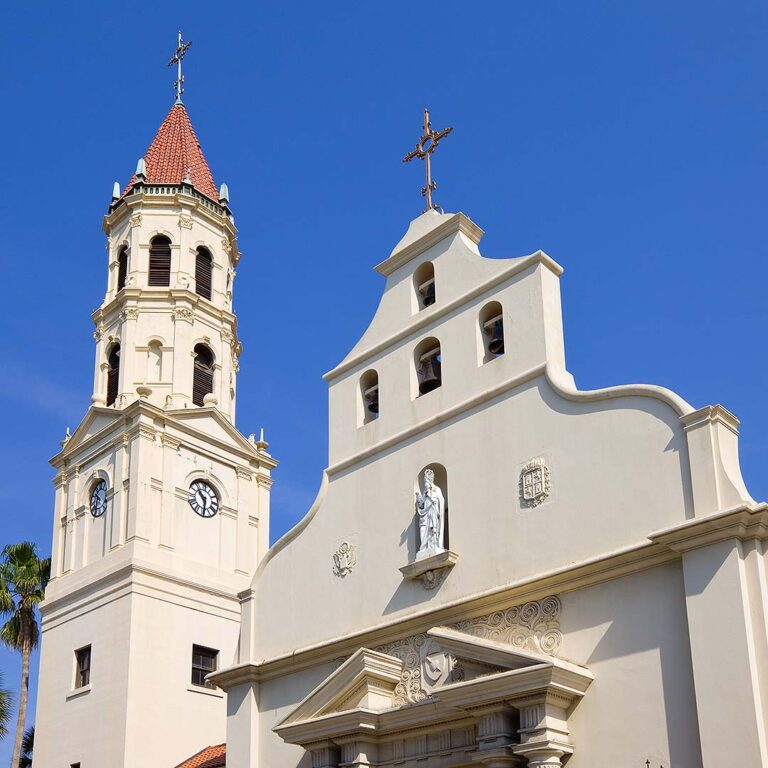
Though it later became a military post under British and American control, it started out as a place of worship and is still tied to the early years of the church of St. Augustine. Its coquina construction and simple design speak to the humble beginnings of religious life in the colony.
What Happened During the British Period and After?

When Florida came under British control in 1763, things changed for the Catholic Church in St. Augustine. Many Catholic residents left the city, and churches were left empty or fell into disrepair. While British leaders allowed religious freedom on paper, Protestant groups began to grow and Catholic influence faded. This was the beginning of a new chapter for the churches in St. Augustine, one that would become more complex over time.
As the city grew, new congregations were founded. Protestant churches took root, and St. Augustine’s religious scene started to look more like the rest of the country. These changes brought new energy and new communities, adding to the story of the churches in St. Augustine. Over time, religious diversity became one of the city’s defining features, with each group adding its own traditions, festivals and gathering places.
What Churches Show the Religious Diversity of St. Augustine Today?

The churches in St. Augustine reflect just how many different faiths have shaped the city. Some are centuries old. Others were built more recently. Each one has its own story and purpose. They represent different eras, different challenges and different groups of people coming together through shared belief.
Trinity Parish Episcopal Church, founded in 1821, is Florida’s oldest Protestant congregation. The current coquina building, completed in 1830, still holds services today. Its long history makes it an important part of St. Augustine history, and its location right in the middle of the historic district helps keep that story front and center.
Memorial Presbyterian Church
Memorial Presbyterian Church is one of the most striking buildings in the city. Built in 1889 by Henry Flagler in memory of his daughter, it features a copper dome, stained-glass windows and a quiet mausoleum that holds the Flagler family. It is both a place of worship and one of the most photographed churches in St. Augustine, drawing visitors for both its beauty and its backstory.
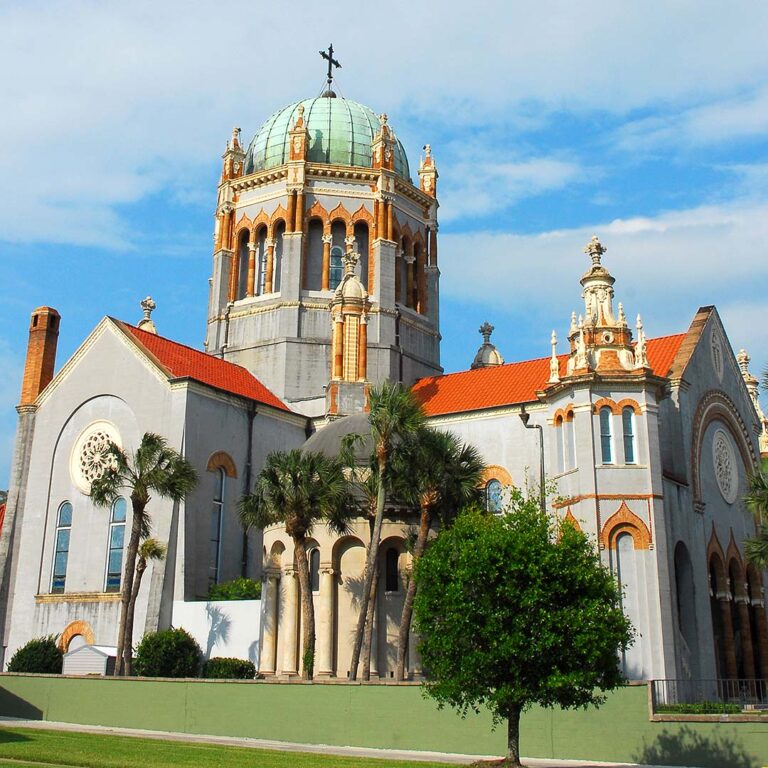
Ancient City Baptist Church
Ancient City Baptist Church, organized in 1887, sits just a few blocks away. Henry Flagler donated the land for the church with one request. Construction had to begin as soon as possible. The finished building opened in 1896 and remains active more than a century later. Inside, the space is warm and welcoming, reflecting the community that built it.
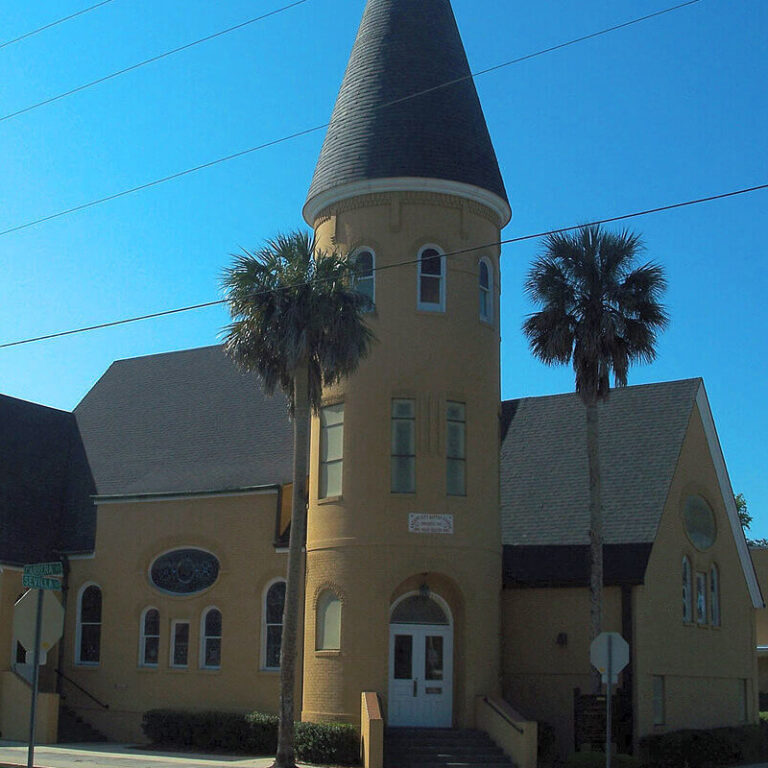
Grace United Methodist Church
Grace United Methodist Church, also funded by Flagler in 1887, has a Spanish Renaissance design and a strong community presence. He built the church to replace another one he had purchased for hotel development, showing how growth and faith often moved side by side in this period of St. Augustine history.
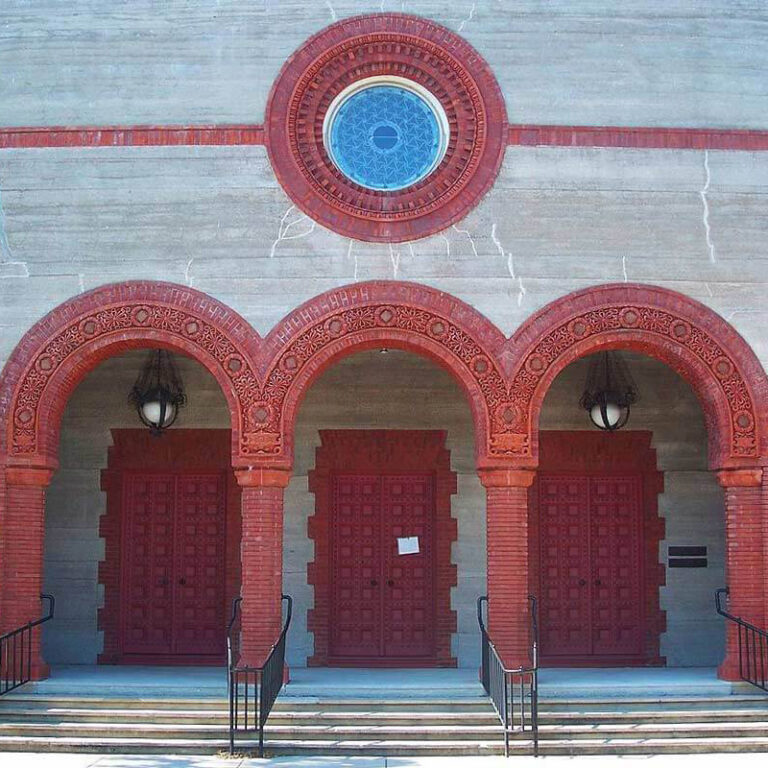
St. Paul African Methodist Episcopal Church, founded in 1873 and rebuilt in 1904, is located in Lincolnville. This church played a major role in the Black community and was a meeting place during the Civil Rights Movement. It remains one of the most important churches in St. Augustine for its history, leadership and deep community roots. Many people today still visit to learn about its role in activism and to take part in its ongoing programs.
St. Benedict the Moor Catholic Church was established in 1889, also in Lincolnville. It was built to serve the growing African-American Catholic population and still operates today. The church is a quiet presence in the neighborhood and a reminder that the churches of St. Augustine have always adapted to meet the needs of their people.
First Congregation Sons of Israel is St. Augustine’s oldest synagogue. It was founded in the late 1880s by Jewish families from Eastern Europe. These families fled persecution and started new lives in Florida. Their synagogue, dedicated in 1923, adds another voice to the city’s spiritual story and helps show just how wide-ranging the churches in St. Augustine have become.
St. Photios Greek Orthodox National Shrine honors the first colony of Greek settlers who came to America in 1768. Located in the historic Avero House, the shrine features beautiful murals and exhibits about Greek Orthodox history. It is peaceful, reverent and deeply tied to immigrant faith. It remains one of the most unique stops for anyone exploring churches in St. Augustine.
Why Does St. Augustine’s Religious Story Still Matter Today?

St. Augustine’s religious heritage is more than a list of old buildings. It is about the people who gathered in these spaces, the stories they carried and the ways they shaped the city. These spaces continue to host services, weddings, funerals, community meals and outreach events. They are part of daily life for many residents and a point of connection for visitors. Through them, the city’s past feels present. And through the people who gather in them, the story of St. Augustine’s faith continues.
FAQs

Catholicism arrived in St. Augustine in 1565 when Spanish admiral Pedro Menéndez de Avilés came ashore with soldiers, settlers and missionaries. Father Francisco López de Mendoza Grajales, the fleet’s chaplain, held a Catholic Mass shortly after landing. That ceremony, performed on the coastline, is widely recognized as the first Catholic Mass ever held in what would become the continental United States. It marked the beginning of organized religious life in the region and the founding of churches in St. Augustine. From that point forward, Catholic worship remained at the center of community life. The parish grew alongside the settlement and was supported by the Spanish Crown through the establishment of missions, schools and churches. That early commitment to faith helped St. Augustine survive the challenges of colonization, war and change. It also gave future generations a strong foundation to build on as the city welcomed new cultures and belief systems.
Missions were essential to the growth of Catholicism in early St. Augustine and played a key role in the city’s relationship with Indigenous communities. Mission Nombre de Dios, founded around 1587, became one of the first Catholic missions in the continental United States. It served as a center for both worship and outreach, allowing Spanish friars to introduce Christianity to local Native American tribes. The friars also offered support through food, medicine and education. While the full story of the missions is complex and includes moments of both cooperation and conflict, their presence shaped the city’s identity from the very beginning. The mission also helped strengthen the churches of St. Augustine, giving it a physical and spiritual presence that extended beyond a single building. Today, visitors to Mission Nombre de Dios can explore a peaceful chapel, gardens and museum exhibits that highlight the mission’s long-standing role in American religious history. It remains a cherished part of the churches in St. Augustine, still welcoming people of all backgrounds who want to learn or reflect.
The British period, which lasted from 1763 to 1783, marked a time of disruption and transition for St. Augustine’s religious life. After Spain gave up Florida to Britain, many Catholic residents and clergy left the city, taking with them centuries of tradition and leadership. Without regular church services and upkeep, several Catholic sites fell into decline. At the same time, British settlers brought Protestant traditions, and for the first time, non-Catholic worship became more common. While the British technically allowed freedom of religion, the shift in power affected everything from property ownership to how churches were used. When Spain regained control in 1783, Catholic practices resumed and new priests arrived. However, the years under British rule left a lasting impression. The city had begun to diversify religiously, and that shift only continued as new groups arrived during the American period. The result is what we see today in the churches in St. Augustine — a mix of faiths that represent many different traditions, all growing from a city with very deep Catholic roots.
Yes, several churches in the city were directly involved in the Civil Rights Movement, especially within the Lincolnville neighborhood, which was home to a large African-American population. One of the most historically significant sites is St. Paul African Methodist Episcopal Church. Founded in 1873, it became much more than a place for Sunday worship. By the 1960s, it was a key gathering space for civil rights leaders, organizers, and community members who were planning peaceful protests and marches. The church welcomed national figures and supported local youth involved in demonstrations. Its leadership encouraged nonviolent action and helped spread awareness of the challenges Black residents faced at the time. Alongside other religious institutions, it stood as a symbol of unity and hope. Today, St. Paul AME continues its mission of service and advocacy, offering a powerful reminder that the churches in St. Augustine have often been places where both spiritual and social progress began.
Many of the most historic churches in St. Augustine are open to the public and welcome visitors throughout the week. The Cathedral Basilica of St. Augustine is open daily and offers a chance to see beautiful stained-glass windows, peaceful chapels and centuries-old architecture. Mission Nombre de Dios and its museum are open to all, with free admission and plenty of space to walk, reflect and learn. Memorial Presbyterian Church allows guests to explore its sanctuary during set hours and also hosts guided tours that highlight its design and connection to Henry Flagler. Other churches like Trinity Episcopal, Ancient City Baptist, and Grace United Methodist often keep their doors open and offer printed guides or signage to help visitors understand their history. These buildings remain active places of worship, but they also serve as living landmarks that invite people to connect with St. Augustine’s spiritual and cultural history.
